Idea by
Déborah López & Hadin Charbel
Deborah Lopez
Call for ideas 2017
Tokyo in(di)visible
Tokyo in(di)visible
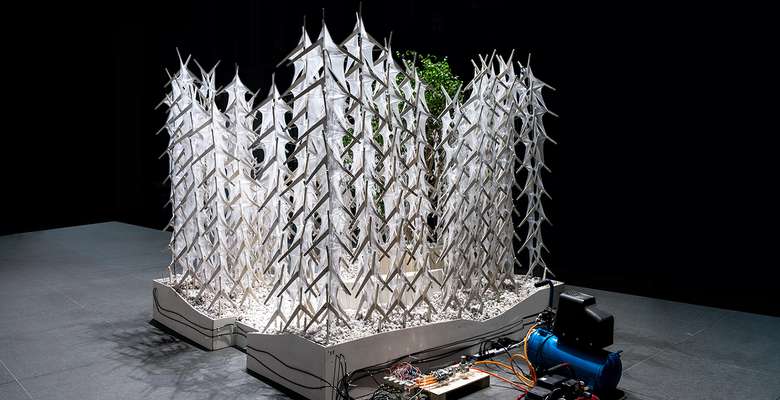
Air is the common platform for all humans — a defining material substance that is along with the ‘hard surfaces’ of the city, another type of boundary equally capable of dividing people. However, unlike the static and impermeable, air can be penetrated and manipulated, suggesting that it can also be designed.
In Tokyo, overlapping events of Hanami (viewing of the cherry blossom) and Kafunsho (hay fever) produce zones of contradiction: being under the cherry blossom and exposed to pollen—bringing to question how to negotiate the outdoor environment in order to maximize certain qualities while suppressing others, without resulting in a glass box.
The proposal is an artificial forest that emerges with the season and can be adapted to any site. By networking a field of prototypes (artificial trees) with local environmental data, sensors measure wind speed, temperature, humidity and airborne particles which in turn activate misters in an orchestrated real-time response.
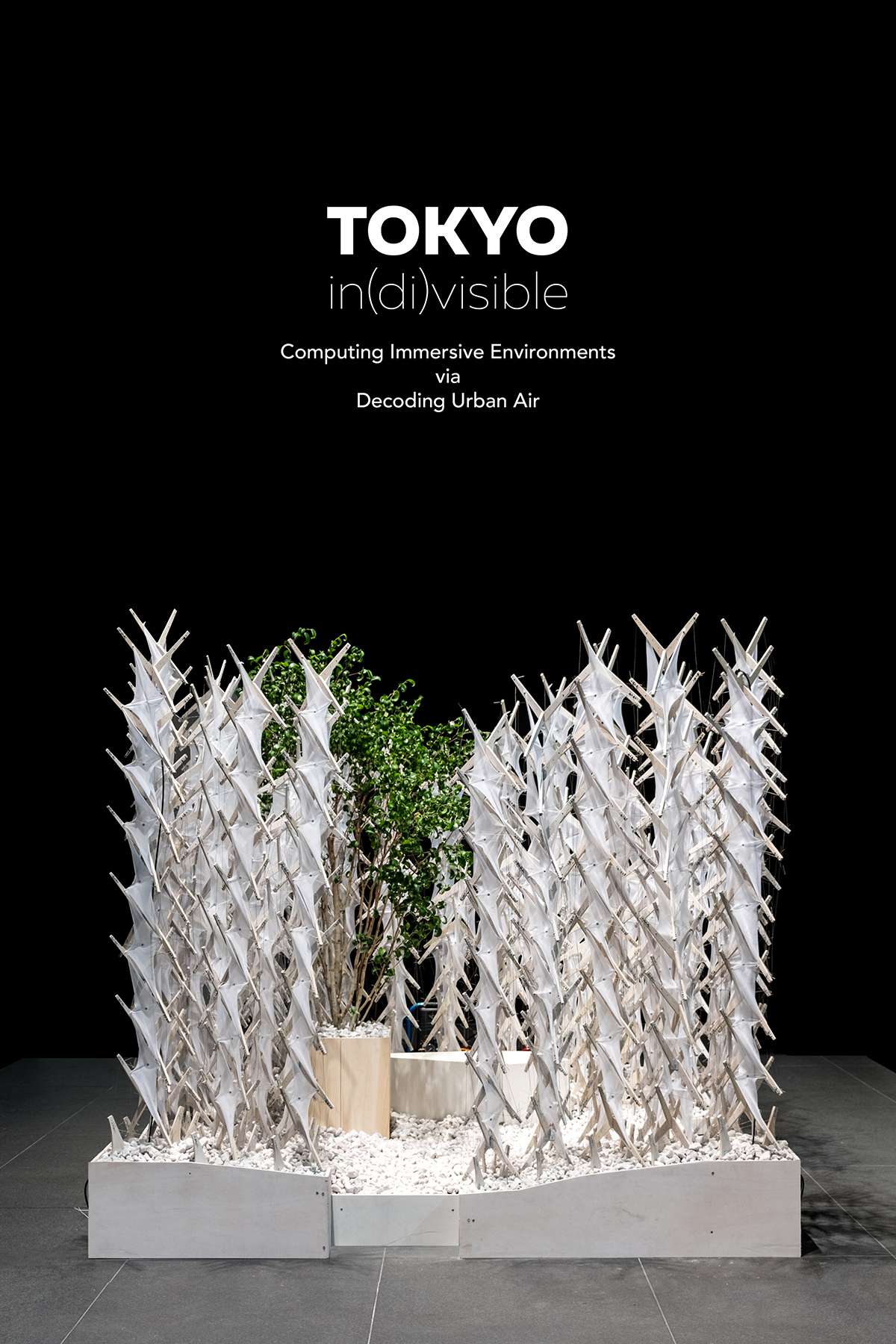
Elevation view of proposal and entrance.
Image credits: Déborah López & Hadin Charbel
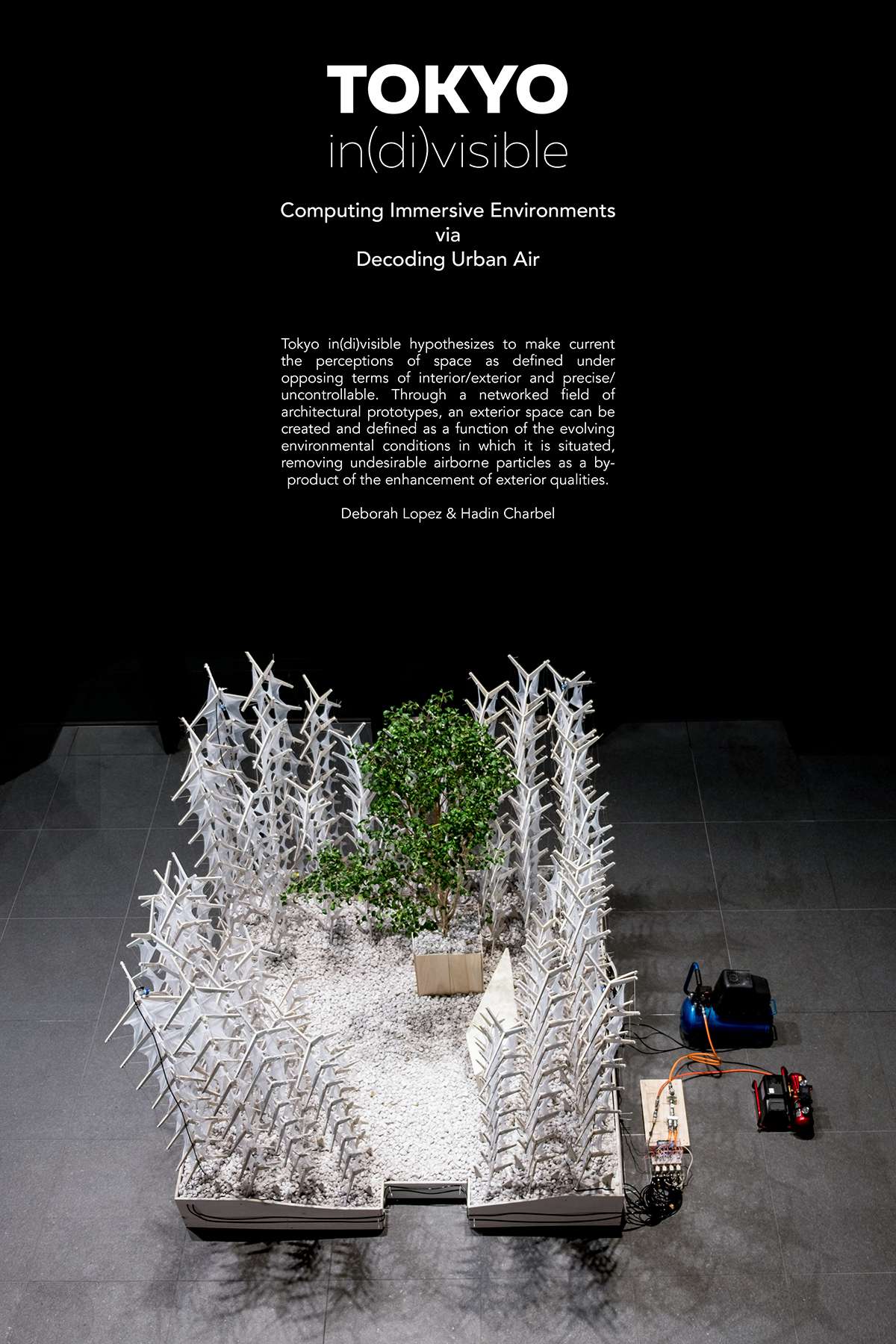
Aerial view of proposal, showinig spatial relation between artificial trees and real tree, and air compressor system.
Image credits: Déborah López & Hadin Charbel
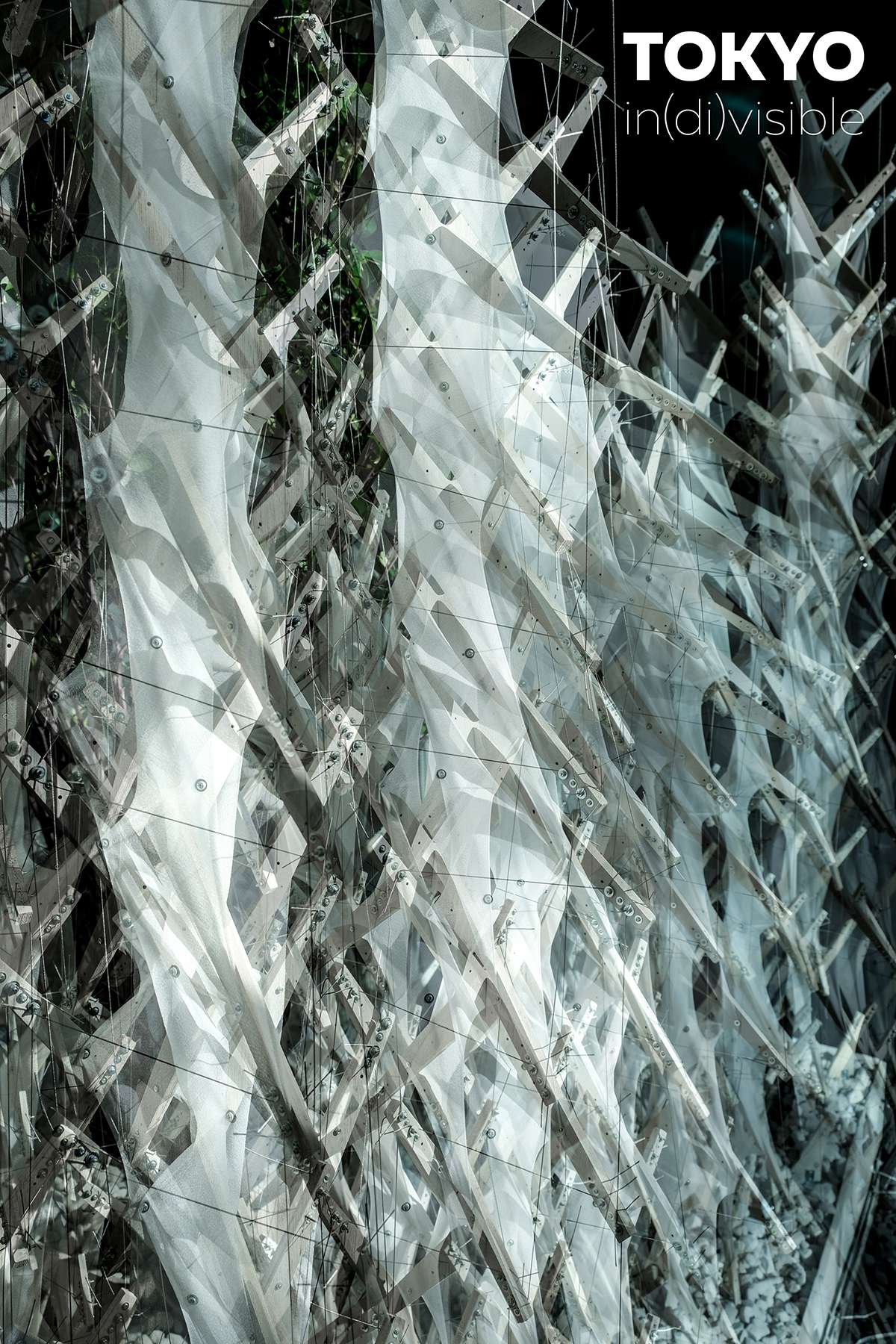
Close up of structures and mesh producing moiré effect with play on transparency and opacity.
Image credits: Déborah López & Hadin Charbel

Arduino setup, including arduino computer, breadboard wiring, and solenoid valves.
Image credits: Déborah López & Hadin Charbel
Tokyo in(di)visible
Tokyo in(di)visible

Air is the common platform for all humans — a defining material substance that is along with the ‘hard surfaces’ of the city, another type of boundary equally capable of dividing people. However, unlike the static and impermeable, air can be penetrated and manipulated, suggesting that it can also be designed.
In Tokyo, overlapping events of Hanami (viewing of the cherry blossom) and Kafunsho (hay fever) produce zones of contradiction: being under the cherry blossom and exposed to pollen—bringing to question how to negotiate the outdoor environment in order to maximize certain qualities while suppressing others, without resulting in a glass box.
The proposal is an artificial forest that emerges with the season and can be adapted to any site. By networking a field of prototypes (artificial trees) with local environmental data, sensors measure wind speed, temperature, humidity and airborne particles which in turn activate misters in an orchestrated real-time response.
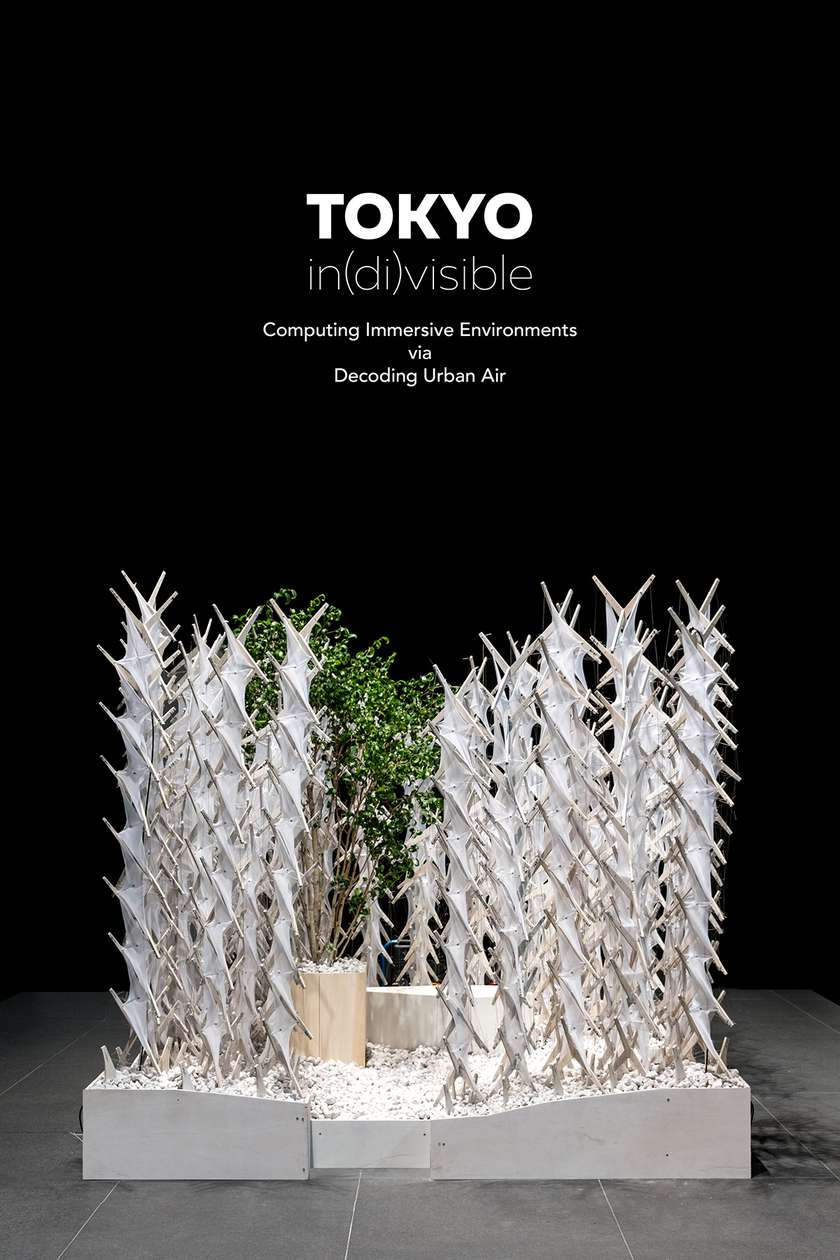
Elevation view of proposal and entrance.
Image credits: Déborah López & Hadin Charbel
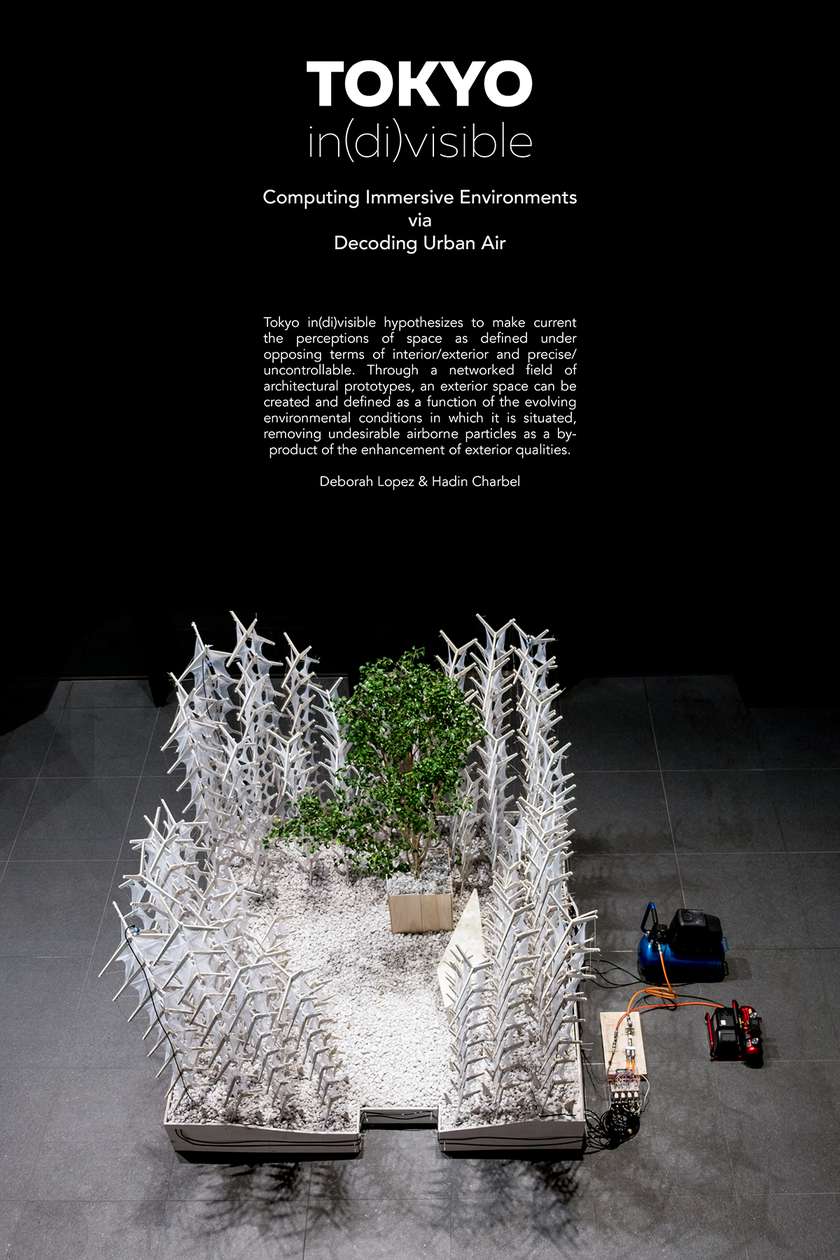
Aerial view of proposal, showinig spatial relation between artificial trees and real tree, and air compressor system.
Image credits: Déborah López & Hadin Charbel

Close up of structures and mesh producing moiré effect with play on transparency and opacity.
Image credits: Déborah López & Hadin Charbel

Arduino setup, including arduino computer, breadboard wiring, and solenoid valves.
Image credits: Déborah López & Hadin Charbel